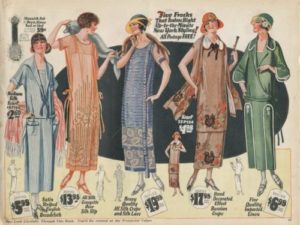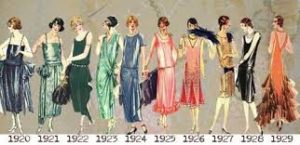
Poirot Score: 59
The Secret Adversary
☆☆
Reasons for the Poirot Score
This is a good read. It is funny and exciting. There is a breathless pace, with much rushing around the United Kingdom, dealing with gangsters, guns, Russian Bolsheviks and American millionaires to add colourful characters. Tommy and Tuppence clearly enjoy each other’s company, so there is the frisson of romance in the air. There are a few, fair clues, which is unusual in a thriller, too.
Tommy Beresford is described as ‘pleasantly ugly’ yet ‘unmistakably a gentleman and sportsman’.
Prudence has ‘no claim to beauty….but charm in the elfin lines of her little face, with wide apart grey eyes’.
Mr. Carter says of Tuppence, contrasting her with Tommy:
‘More intuition and less common sense. They make a pretty pair … Pace and stamina’.
Click here for full review (spoilers ahead)
Trivia
Inspector Japp
Inspector Japp of Scotland Yard appears in many of Christie’s early novels. He is an acquaintance of, and sometimes a foil to, Hercule Poirot. In one novel Poirot takes Japp to a French restaurant in London. We meet him in Christie’s first published novel, The Mysterious Affair at Styles. He is mentioned in the second Poirot novel, The Murder on the Links. Thereafter Japp appears in six more novels and is mentioned in a further three. Japp is mentioned in The Secret Adversary, and so acts as a small link between the worlds of Poirot, and of Tommy and Tuppence. Rather as Poirot and Hastings owe much to Holmes and Watson, so Japp has similarities with Conan Doyles’ Inspector Lestrade.
Tommy and Tuppence and Albert
Tommy and Tuppence appear in several short stories, and four novels spread throughout Christie’s long career, almost as though she couldn’t let them go. The novels are: The Secret Adversary (1922); Nor M? (1941); By the Pricking of my Thumbs (1968); and Postern of Fate (1973) which was the last novel Christie wrote. The book of short stories is Partners in Crime (1929).
Tuppence appears as a charismatic, impulsive and intuitive person, perhaps like Agatha Christie herself. Tommy is described by Sir James Peel Edgerton: “he is not clever, but it is hard to blind his eyes to the facts”. A portrait of Archie Christie?
Unlike Hercule Poirot and Miss Marple, who start off old and fifty years later are hardly any older, Tommy and Tuppence age roughly in step with the time of publication of the books in which they appear. They are in their early twenties in The Secret Adversary (1922) and in their seventies in Postern of Fate (1973). We will learn that they have three children – their twins Deborah and Derek, and an adopted orphan, Betty. How they come to adopt Betty is explained in the Second World War thriller N or M.
Tommy and Tuppence first meet Albert, the young liftboy, in The Secret Adversary. In Partners in Crime Albert becomes their assistant at the private detective agency. By Postern of Fate he has become their butler and has himself been married and widowed.
One might speculate that the private life of Tommy and Tuppence is what Christie imagined for herself but for Mr. Christie’s infidelity and divorce.
Dover Street tube station, London and The Ritz Hotel
Tommy and Tuppence first meet when they bump into each other at Dover Street underground station. You will not find Dover Street station on a modern map of London’s underground railways. It was originally built in 1906 and re-built in 1933 with the addition of escalator stairs and a ticket hall. The entrance was moved from Dover Street – a road running north off Piccadilly – almost two blocks away onto Piccadilly itself, and the station was renamed Green Park. It is quite a walk from the entrance of Green Park station down to the Piccadilly Line platforms. The walk takes you east and back the two blocks until you arrive almost underneath Dover Street.
Christie stayed at the boutique Brown’s Hotel in Dover Street which was probably an inspiration for the setting of her 1965 novel At Bertram’s Hotel . Another inspiration may have been Flemings Hotel, a short walk west of Green Park station in Half Moon Street.
The Ritz is a much larger hotel in Piccadilly. It appears in several Christie novels, sometimes lightly disguised as The Blitz.
Trearddur Bay, Anglesey, Wales
Trearddur Bay is where Tommy and Tuppence are sent on a ‘wild goose chase’. It is also where, on 24 February 2011, Prince William and his future wife, Catherine Middleton, launched a lifeboat – their first official function as an engaged couple.
A Liftboy
The lifts (elevators) in blocks of flats, hotels and department stores in the 1920s, were operated by a ‘lift boy’. He could be a young man, but might not be a ‘boy’ at all, but an elderly man, or a disabled war veteran. The job of the liftboy was to make sure the external and internal doors of the lift were safely closed and locked before taking the lift to the appropriate floors. Because liftboys ferried people around a block of flats all day long, they were a useful source of information about who was visiting whom. In expensive shops, hotels, or flats liftboys often wore smart livery with a ‘pill box’ hat set at a rakish angle. The job of liftboy had become redundant, in all but the poshest establishments, by the 1950s when lifts became totally automatic.
Women and the Vote in the UK
After World War I, Parliament passed The Representation of the People Act, 1918. This Act enfranchised women over the age of 30 who met minimum property qualifications. About 8.4 million women gained the vote. As Agatha Christie (and Tuppence) were still under 30 years old they did not. It was not until 1928, that women in Great Britain gained equal voting rights to men, and all citizens over 21 were given the opportunity to vote.
Feigned Amnesia
Did writing The Secret Adversary provide Agatha Christie with the seed of the idea that led to her famous disappearance in 1926?
The question that drives the plot of this novel is: where is Jane Finn? We learn that Jane pretends, for five years, to have lost her memory in order to preserve her life. Near the end of the book Jane Finn says:
“I’d never known what fear – really sickening fear – was before! … Suddenly something put the thought of loss of memory into my head. The subject had always interested me, and I’d read up an awful lot about it. I had the whole thing at my fingertips. If only I could succeed in carrying the bluff through, it might save me.”
Agatha Christie herself was distraught in 1926 when Archie Christie asked her for a divorce. Shortly afterwards she disappeared. There was a huge police hunt for her, which included dragging the local lake and taking Archie Christie in for questioning: had he murdered her? Ten days later she was found, booked into a Harrogate hotel under an assumed name –‘Mrs Theresa Neele’. Her husband had fallen in love with Nancy Neele. When Archie Christie went up to Harrogate to identify his wife he stated: “She has suffered from the most complete loss of memory and I do not think she knows who she is”. There has been much speculation on what Christie did during those ten days and whether her memory loss was feigned or genuine. What is clear is that a few years earlier Christie had based a whole book plot on a character who feigned memory loss as a way of survival.




